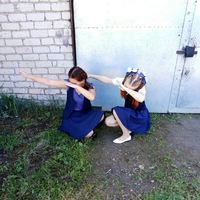
Fe-->Fe2O3-->FeCl3-->Fe(OH)3-->Fe2O3-->
 0
0
 0
0
Ответы на вопрос
 Внимание! Ответы на вопросы дают живые люди. Они могут содержать ошибочную информацию, заблуждения, а также ответы могут быть сгенерированы нейросетями. Будьте внимательны. Если вы уверены, что ответ неверный, нажмите кнопку "Пожаловаться" под ответом.
Внимание! Ответы на вопросы дают живые люди. Они могут содержать ошибочную информацию, заблуждения, а также ответы могут быть сгенерированы нейросетями. Будьте внимательны. Если вы уверены, что ответ неверный, нажмите кнопку "Пожаловаться" под ответом.


 0
0
 0
0

The sequence you've mentioned appears to describe a series of chemical reactions involving iron (Fe) progressing from its elemental form to various compounds. Let's break down the reactions step by step:
Fe → Fe2O3: This reaction involves the oxidation of iron (Fe) to form iron(III) oxide, commonly known as rust (Fe2O3).
Fe2O3 → FeCl3: In this step, iron(III) oxide (Fe2O3) is reacting with chlorine (Cl2) or hydrochloric acid (HCl) to form iron(III) chloride (FeCl3).
FeCl3 → Fe(OH)3: Here, iron(III) chloride (FeCl3) reacts with water (H2O), leading to the formation of iron(III) hydroxide (Fe(OH)3).
Fe(OH)3 → Fe2O3: Iron(III) hydroxide (Fe(OH)3) can dehydrate or lose water molecules to produce iron(III) oxide (Fe2O3), which is similar to the initial product in step 1.
It appears that the sequence starts with elemental iron (Fe), goes through various chemical reactions, and ends up with iron(III) oxide (Fe2O3), which is similar to the product in the first step. Depending on the specific conditions and reactants used, these reactions can represent different chemical processes, but this sequence generally depicts the transformation of iron from its elemental form to various iron compounds and back to iron(III) oxide.
 0
0
 0
0
Похожие вопросы
Топ вопросов за вчера в категории Химия
Последние заданные вопросы в категории Химия
-
Математика
-
Литература
-
Алгебра
-
Русский язык
-
Геометрия
-
Английский язык
-
Химия
-
Физика
-
Биология
-
Другие предметы
-
История
-
Обществознание
-
Окружающий мир
-
География
-
Українська мова
-
Информатика
-
Українська література
-
Қазақ тiлi
-
Экономика
-
Музыка
-
Право
-
Беларуская мова
-
Французский язык
-
Немецкий язык
-
МХК
-
ОБЖ
-
Психология
-
Физкультура и спорт
-
Астрономия
-
Кыргыз тили
-
Оʻzbek tili


























